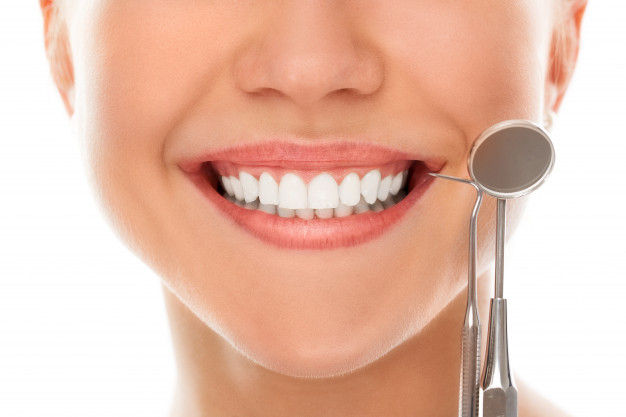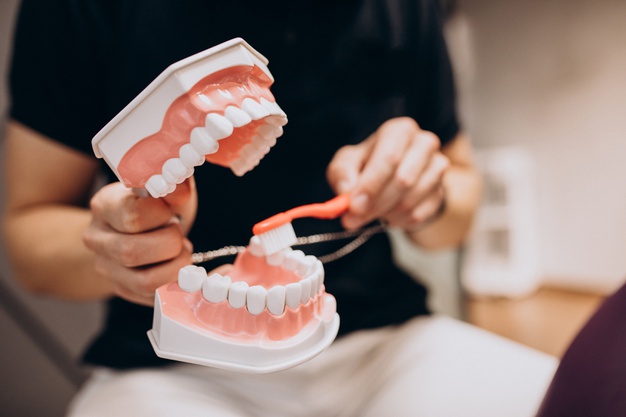Cosmetic dentistry is a branch of dentistry responsible for correcting those imperfections that affect the aesthetics of hard and soft oral tissues, that is, teeth and gums.
Although its main objective is to focus on aesthetics, it is also involved in the health of teeth and gums, since for a smile to be beautiful, it must be free of cavities and inflammation of the gums.
Thanks to it and its corrective treatments, it is possible to improve the oral structures’ appearance and the patient’s face, achieving harmony and balance between the oral and facial elements.
Parameters including the shape of the face, sex, and age of the patient, the shape and size of the teeth, etc., are taken into account so that the dentist adapts the treatment offered to each individual’s requirements and needs.
Under what circumstances may treatment for esthetic purposes be necessary?
Several scenarios may result in the need to resort to a cosmetic dentistry treatment since there are many reasons why a dentist may alter aesthetics.
– Tooth decay in anterior teeth.
– Trauma or tooth fractures.
– Space between two adjacent (anterior) teeth, known as a diastema.
– Congenital dental absences or as a result of a dental extraction.
– Changes in tooth coloration (pigmentations and stains) that may be due to: root canal treatments; consumption of coffee, tea, red wine, or dark sodas; smoking, etc.
Abnormalities in the teeth’ shape and size, such as microdontia, consist of smaller teeth than usual.
– Alterations in the position and alignment of the teeth may be tilted forward, backward, or sideways.
– Gummy smile. When smiling, a large part of the gum surrounding the upper teeth is visible.
– Gingival recession towards the root.
These alterations, and compromising aesthetics, can also affect chewing function and phonation of words. Also, some patients may see their self-esteem diminished because they can generate complexes in those who suffer from it.
Therefore, we can affirm that not only the esthetics and oral-facial harmony but also the general health and consequently the quality of life of the patient diminishes, which leads us to the following point:
Importance of cosmetic dentistry
Treatments for aesthetic purposes, in addition to correcting those elements that disturb the oral and facial harmony, also favor the correct masticatory function (keep in mind that the process of digestion of food begins with chewing), achieve a balance between the contacts of the upper and lower teeth during the bite and correct distribution of forces (which protects the integrity of dental tissue), etc.
Besides, the smile can be the source of many insecurities and complexes, so some people may feel self-conscious and lack confidence due to their teeth and gums, which negatively affects their personal, social, and work relationships.
This is why cosmetic dentistry, by achieving a balance and harmony between oral and facial structures, also improves the whole organism’s general health because of the absence of disease and a good state of emotional, mental, and social well-being.
Treatments
Aesthetic procedures are given to modify the shape, position, and color of the teeth and gums. To achieve this, the dentist considers factors such as the shape of the patient’s teeth and face, healthy tissue remaining, age, habits, etc., to determine the most appropriate treatment.
Among the various treatments are:
Aesthetic restorations: These are made with highly aesthetic dental materials, which can adequately mimic tooth enamel color and go unnoticed. Also, they have good durability and resistance properties.
Teeth whitening: This is a procedure of great popularity in recent years; it can be clinical or ambulatory (the patient performs it at home following the guidelines indicated by the dentist). In whitening, bio-compatible whitening substances are used to eliminate pigmentations and stains caused by drinks, medications (tetracycline), aging, etc.
Gingivectomy: This is a procedure in which the gingival margin is reshaped, that is, the edge of the gum, to increase the length of the crown of the tooth and thus make it look longer and with a better height-width ratio.
Contouring of incisal edges: A technique in which only the incisal part of the anterior tooth is contoured to modify the length and shape of the tooth. It is considered a minimally invasive treatment.
Apart from teeth whitening, one of the most popular esthetic procedures are veneers, since they can be used to correct both the loss of dental tissue due to tooth decay and those alterations generated in the structure of the tooth due to: fractures, wear, stains, and they are also indicated to fix diastemas.
Veneers: These are thin layers that are adhered to the tooth in order to modify its shape, size, and position. These can be made of composite or porcelain: When they are made of composite, they are made directly on the tooth in a single session, while when they are made of porcelain, they are manufactured indirectly to the size of the patient’s tooth by a laboratory technician.
Dental prosthesis: They restore the dental structure and its contour, reproduce the shape of the natural teeth, improve facial esthetics and masticatory function. These prostheses can be fixed such as crowns and bridges, or removable such as partial dentures or full dentures.
-Dental crown: It is a prosthesis generally made of porcelain cemented over a prepared tooth or a dental implant.
-Bridges: Unlike the crown, this prosthesis replaces more than one missing tooth. It is fixed to the existing tooth that is adjacent to the edentulous space.
-Partial denture and full denture: These prostheses mimic the shape and reproduce the function of several missing teeth or even a complete dental arch. Dental implants can also support the full denture.
Dental implants: These are attachments that, in conjunction with a crown or a full denture, can adequately replace the missing teeth. This union has excellent esthetic properties, strength, and durability, making it an ideal option to successfully reproduce the appearance and function of lost natural teeth.
Grafts: They are used in gingival recession cases, which generates exposure of the dental root and increased sensitivity when chewing or ingesting hot or cold drinks. This recession may be the result of periodontal disease or inadequate control during orthodontic treatment.


